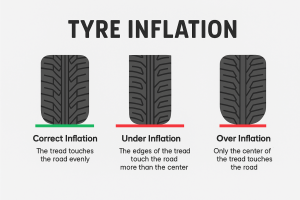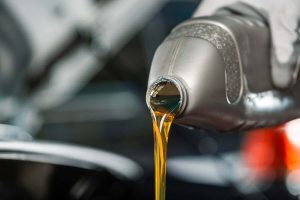The heart and soul of any vehicle is its engine and keeping it lubricated well ensures that it runs smoothly, its performance optimized and minimum engine wear.
Engine lubricants come in three forms, mineral and synthetic and hybrid of both (also called Semi Synthetic).
Every lubricant comes with about 20 to 25% additives such as anti-foaming agents, anti-wear agents and viscosity conditioners which provide a significant influence on the lubricant’s performance.
The difference between the two? Though both oils are pumped from the ground, synthetic oils go through a more advanced refining process.
Mineral Lubricants
Mineral lubricants have been used since the dawn of mechanical vehicles and offer superb lubrication. The biggest appeal to this oil is its cost being more cost effective to manufacture.
The only drawback in mineral oils is the presence of contaminants and impurities like sulfur that cannot be filtered with conventional refining.
This leads to a higher tendency for the oil to oxidize, solidify and breakdown faster under extreme use as compared to synthetic oils.
Synthetic Lubricants
Synthetics oils are manufactured specifically for supreme engine lubrication and engine protection.
With higher purity, it is resistant to wear and breakdown even under extreme usage and by that we mean high revs and high load in our hot tropical climate.
Semi Synthetic Lubricants
Also known as synthetic blend, semi synthetic oils are a good compromise with some characteristics of the hard-wearing and better-performing fully synthetic plus the lower cost of mineral oils.
Motor Lubricant Grades – Understanding SAE Ratings
Lubricant manufacturers provide a temperature sensitive viscosity rating on each label with an SAE rating. This rating is determined by the Society of Automotive Engine (SAE).
Viscosity describes the thickness of a given liquid. A thicker liquid is considered as low viscosity while a thinner one as high viscosity.
Single grade lubricants like an SAE 30 will be too thick during start up and runs well when the engine is warmed up.
While an SAE 5 viscosity will run well in cold engine start ups but run too thin when warmed up providing less protection.
A combination of both characteristics is where multi grade oils come in, providing smoother-flowing viscosities during start ups as well as sufficient protection when warmed up.
A typical multi-grade lubricant SAE rating like 5W 30, simply means a low viscosity of 5 when cold (W for winter) and a high viscosity of 30 when the engine has reached its optimum temperature.
Make sure to always consult with your regular mechanic on the recommended oil grade to use that is specific to your vehicle model or just refer to your car manual.
Conclusion
Still confused? Think of it this way.
Mineral oil is like butter, place it on a pan on high heat and it melts away but eventually ends up smoking out and leaving deposits but synthetic oil like vegetable oil that flows freely on the get go, retains its composition and keeps the pan coated even under high heat.
Regardless of your choice of lubricant it is important to send your car for its scheduled engine oil change since lubricants degrade with use.
| Mineral Lubricants | Synthetic Lubricants |
| Lower cost | Higher cost |
| Regular engine protection | Outstanding engine protection |
| Higher fuel consumption from higher engine resistance | Optimized fuel consumption with more efficient engine |
| Oxidizes (thickening) | Higher resistance to oxidation reducing drag |
| Oxidizes and breaks down faster in extreme use | Thermal breakdown resistance under extreme use |
| Lower viscosity – thicker, flows slower and takes longer to circulate in engine when started. | Higher viscosity – flows easily and reaches optimum performance faster when engine is started. |





